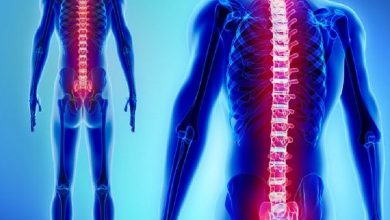Diabetes

What is diabetes mellitus?
Diabetes mellitus is a disease that prevents your body from properly using the energy from the food you eat. Diabetes occurs in one of the following situations:
- The pancreas (an organ behind your stomach) produces little insulin or no insulin at all. Insulin is a naturally occurring hormone, produced by the beta cells of the pancreas, which helps the body use sugar for energy.
-Or-
- The pancreas makes insulin, but the insulin made does not work as it should. This condition is called insulin resistance. Check out the latest glucofort reviews.
To better understand diabetes, it helps to know more about how the body uses food for energy (a process called metabolism).
Your body is made up of millions of cells. To make energy, the cells need food in a very simple form. When you eat or drink, much of your food is broken down into a simple sugar called glucose. Glucose provides the energy your body needs for daily activities.
The blood vessels and blood are the highways that transport sugar from where it is either taken in (the stomach) or manufactured (in the liver) to the cells where it is used (muscles) or where it is stored (fat). Sugar cannot go into the cells by itself. The pancreas releases insulin into the blood, which serves as the helper, or the “key,” that lets sugar into the cells for use as energy.
When sugar leaves the bloodstream and enters the cells, the blood sugar level is lowered. Without insulin, or the “key,” sugar cannot get into the body’s cells for use as energy. This causes sugar to rise. Too much sugar in the blood is called “hyperglycemia” (high blood sugar).
What are the types of diabetes?
There are two main types of diabetes: type 1 and type 2:
- Type 1 diabetes occurs because the insulin-producing cells of the pancreas (beta cells) are damaged. In type 1 diabetes, the pancreas makes little or no insulin, so sugar cannot get into the body’s cells for use as energy. People with type 1 diabetes must use insulin injections to control their blood glucose. Type 1 is the most common form of diabetes in people who are under age 30, but it can occur at any age. Ten percent of people with diabetes are diagnosed with type 1.
- In type 2 diabetes (adult onset diabetes), the pancreas makes insulin, but it either doesn’t produce enough, or the insulin does not work properly. Nine out of 10 people with diabetes have type 2. This type occurs most often in people who are over 40 years old but can occur even in childhood if there are risk factors present. Type 2 diabetes may sometimes be controlled with a combination of diet, weight management and exercise. However, treatment also may include oral glucose-lowering medications (taken by mouth) or insulin injections (shots).
Other types of diabetes might result from pregnancy (gestational diabetes), surgery, use of certain medicines, various illnesses and other specific causes.
This booklet has been prepared for those who have recently been diagnosed with Type 2 Diabetes. Type 2 Diabetes is a very common medical condition. While it is a condition that is on the increase, a lot is now known about Type 2 Diabetes and it can be successfully treated and managed so that the person with Diabetes can live a long and healthy life.
Type 2 Diabetes is a condition which occurs when the body is no longer able to deal with the increasing level of glucose (sugar) in the blood.
Normally when we eat food, in particular carbohydrates (starches and sugars) the level of glucose in our blood increases. In response to this the pancreas produces insulin which brings the level of glucose back to normal. Insulin is a hormone which is produced by a small organ in the body called the pancreas.
In a person with Type 2 Diabetes the body may not produce enough insulin or the insulin produced may not work as effectively as it should. This is referred to as insulin resistance. Being overweight increases insulin resistance. Obesity can eventually lead to nerve damage, more information on this Observer.com article.
Both the lack of insulin and the insulin resistance mean that the glucose levels are poorly controlled. It is important to keep the blood glucose within normal limits as poorly controlled diabetes can damage the eyes, kidneys and the nerves and can also contribute to cardio-vascular disease (CVD) which includes heart disease, stroke and poor circulation.




